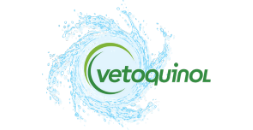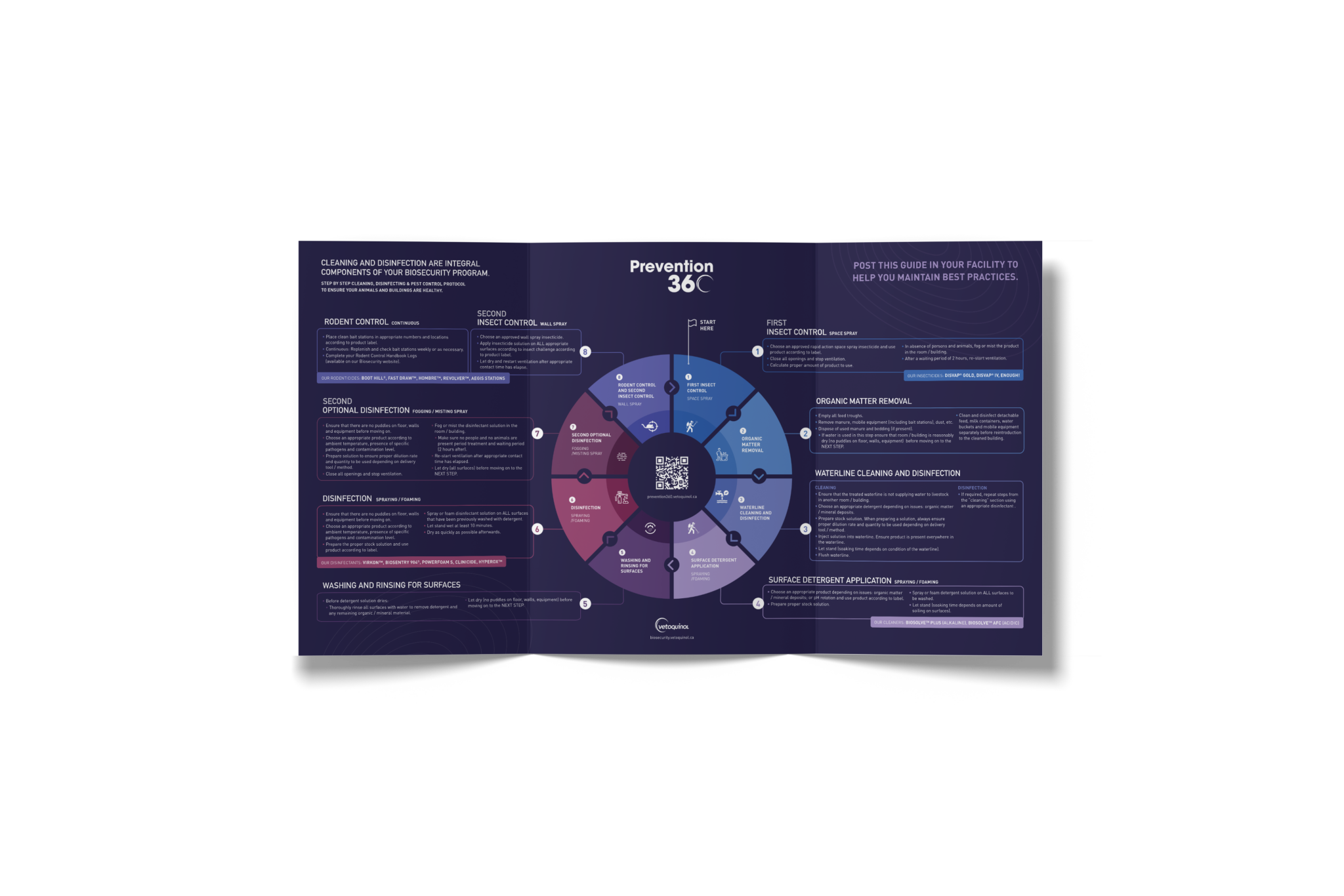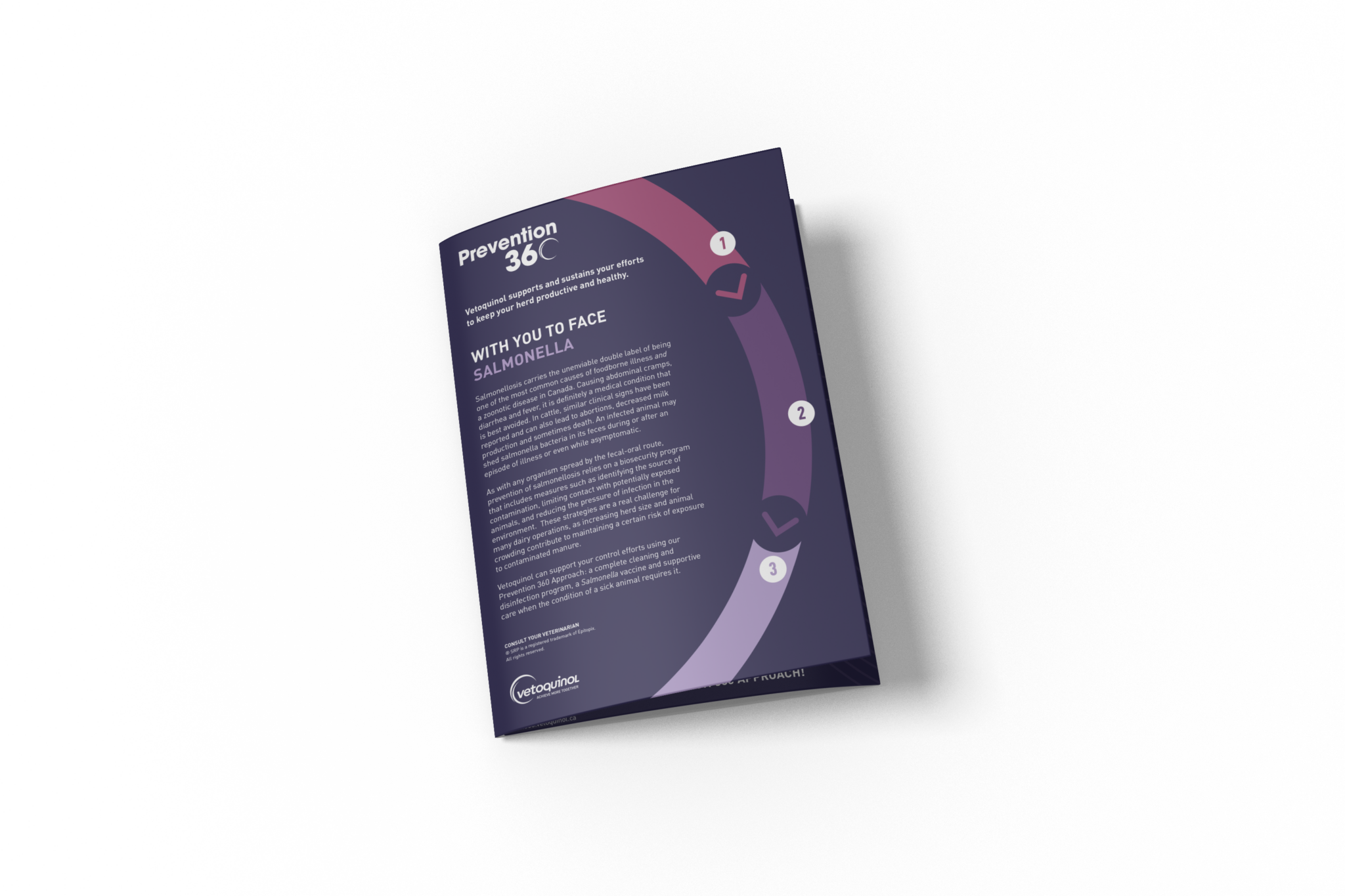
Welcome to a program where prevention is better than cure
Prevention is necessary to improve the health and productivity of cattle herds. From a public health standpoint, the prevention of salmonella infections is important to reduce the risk of zoonotic disease, particularly among farm workers.
Click on the pictures below to consult or download your PREVENTION 360 documentation.

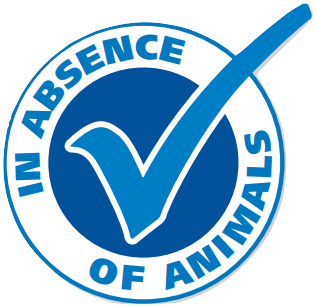
FIRST INSECT CONTROL
Space spray
►Choose an approved rapid action space spray insecticide
►Close all openings and stop ventilation
►Calculate proper amount of product to use
►Fog or mist the product in the room / building - Make sure no one and no animal is present during treatment and waiting period (2 hours after)
►After 2 hours, re-start ventilation.

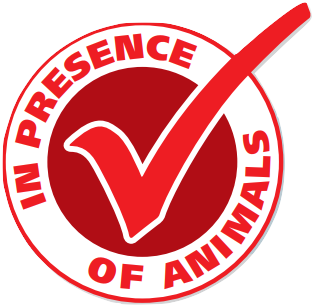
ORGANIC MATTER REMOVAL
►Empty all feed troughs
►Remove all bedding, manure, mobile equipment (including bait stations), dust, etc.
►If water is used in this step ensure that room / building is reasonably dry (no puddles on floor, walls, equipment) before moving on to the NEXT STEP
►Clean and disinfect mobile equipment before reintroduction to building following disinfection.

WATERLINE CLEANING AND DISINFECTION
Cleaning
►Ensure that treated waterline is not supplying water to livestock in another room / building
►Choose an appropriate detergent (depending on issues: organic matter / mineral deposits)
►Prepare stock solution to ensure proper dilution rate and quantity to be used depending on delivery tool / method
►Inject solution into waterline
►Ensure product is present everywhere in the waterline
►Let stand (soaking time depends on condition of the waterline)
►Flush waterline.
Disinfection
►If required, repeat steps from the CLEANING section using an appropriate disinfectant.


DETERGENT APPLICATION
Spraying / foaming
►Choose an appropriate product (depending on issues: organic matter / mineral deposits; or pH rotation)
►Prepare stock solution to ensure proper dilution rate and quantity to be used depending on delivery tool / method
►Spray or foam detergent solution on ALL surfaces to be washed
►Let stand (soaking time depends on amount of soiling on surfaces.
Detergent solution should be removed / rinsed off (see NEXT STEP) before it dries.


WASHING & RINSING
►Before detergent solution dries, thoroughly rinse all surfaces with water to remove detergent and any remaining organic / mineral material
►Let dry completely (no puddles on floor, walls, equipment) before moving on to the NEXT STEP.

DISINFECTION
Spraying / foaming
►Ensure that there are no puddles on floor, walls and equipment before moving on
►Choose an appropriate product according to ambient temperature, presence of specific pathogen and contamination level
►Prepare stock solution to ensure proper dilution rate and quantity to be used depending on delivery tool / method
►Spray or foam disinfectant solution on ALL surfaces that have been previously washed with detergent
►Let stand at least 10 minutes
►Dry as quickly as possible afterwards.

SECOND OPTIONAL DISINFECTION
Fogging / misting
►Ensure that there are no puddles on floor, walls and equipment before moving on
►Choose an appropriate product according to ambient temperature, presence of specific pathogen and contamination level
►Prepare solution to ensure proper dilution rate and quantity to be used depending on delivery tool / method
►Close all openings and stop ventilation
►Fog or mist the disinfectant solution in the room / building - Make sure no one and no animal is present during treatment and waiting period
►Re-start ventilation after appropriate contact time has elapsed
►Let dry (no puddles on floor, walls, equipment) before moving on to the NEXT STEP.

SECOND INSECT CONTROL
Wall spray
►Choose an approved wall spray insecticide
►If applicable, prepare solution to ensure proper dilution rate and quantity to be used depending on delivery tool / method
►Apply insecticide solution on ALL appropriate surfaces according to insect challenge<
►Let dry and restart ventilation before moving on to the NEXT STEP.

CONTINUOUS INSECT CONTROL
Baits / traps / livestock spray / etc.
►For year-round insect control, choose an appropriate product such as fly bait and / or glue traps
►Use an appropriate amount of product to ensure optimal control and continuous supply
►If applicable, use approved livestock insecticides
►If applicable, use insecticide ear tags for livestock.


RODENT CONTROL (CONTINUOUS)
►Place clean bait stations in appropriate numbers and locations
►Replenish and check bait stations weekly or as necessary
►Complete your Rodent Control Handbook Logs
►Update your Network Map as necessary.
VISITOR CONTROL
ACCESS AND VEHICLES
►Keep a visitor logbook - Who, when, where from
►Limit or forbid access to premises / buildings / critical areas
►Consider cleaning and disinfection of vehicles (upon arrival and on departure) - Wheels, wheel arches, undercarriage, cab.
CLOTHING AND FOOT BATHS
►Use clean or disposable protective clothing - Coveralls, hats, gloves, boots
►Require hand washing and sanitizing
►Install foot baths and change solutions weekly (or more often, as necessary)
►Cleaning footwear of soil before stepping in the foot bath is always best!
